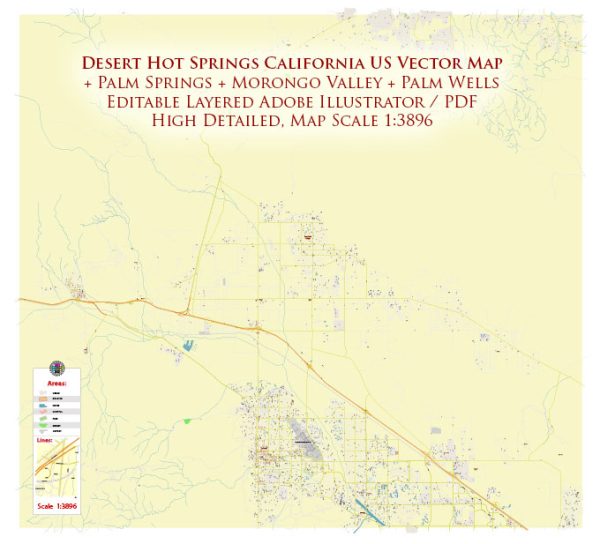Desert Hot Springs and Palm Springs, both located in California, have unique histories of urban development shaped by various factors, including geography, climate, tourism, and local industries. While they share some similarities, each city has its own distinct story.
Desert Hot Springs:
Early Development:
- Desert Hot Springs is situated in the Coachella Valley and is known for its natural hot mineral springs.
- Native American communities, such as the Cahuilla people, were the area’s original inhabitants.
- The city’s development gained momentum in the mid-20th century when the healing properties of its hot springs attracted attention.
Tourism and Growth:
- In the 1950s and 1960s, Desert Hot Springs became a popular destination for health seekers and tourists seeking relaxation.
- The city’s growth was influenced by the rise of spa culture, with many resorts and hotels capitalizing on the appeal of the natural hot springs.
Challenges and Economic Shifts:
- Despite initial growth, Desert Hot Springs faced economic challenges, including water scarcity issues.
- The city has experienced periods of boom and decline, with efforts to diversify its economy and attract businesses.
Contemporary Development:
- In recent years, there has been a renewed focus on tourism, and efforts to revitalize the city’s economy through community development initiatives.
Palm Springs:
Early Settlement:
- Palm Springs has a longer history of development, dating back to the late 19th century when it was initially settled as a resort town.
- The area’s climate, characterized by warm winters, attracted visitors seeking a desert escape.
Hollywood Glamour and Mid-century Modern Architecture:
- In the mid-20th century, Palm Springs gained fame as a playground for Hollywood stars and affluent individuals.
- The city is renowned for its mid-century modern architecture, with iconic examples of this style found throughout the area.
Tourism and Economic Development:
- Tourism has been a major driver of Palm Springs’ economy, with golf, spa resorts, and cultural events attracting visitors.
- The city has evolved into a year-round destination with a vibrant arts scene and numerous festivals.
Urban Planning and Preservation:
- Palm Springs has invested in urban planning and preservation efforts, maintaining the mid-century modern aesthetic and protecting historical landmarks.
Diversity of Economy:
- In addition to tourism, Palm Springs has diversified its economy with industries like real estate, healthcare, and technology playing a role in its development.
In summary, both Desert Hot Springs and Palm Springs have histories deeply intertwined with their natural resources and the tourism industry. While Desert Hot Springs capitalized on its hot springs, Palm Springs became a glamorous desert oasis with a focus on mid-century modern architecture and a diverse economy. Both cities continue to evolve, facing challenges and embracing opportunities for growth and development.


 Author: Kirill Shrayber, Ph.D.
Author: Kirill Shrayber, Ph.D.